Keynote Speakers
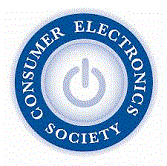
IEEE 2014 ICCE-Berlin Keynotes
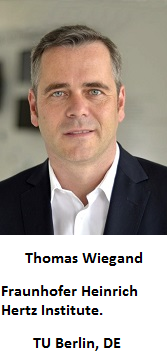 |
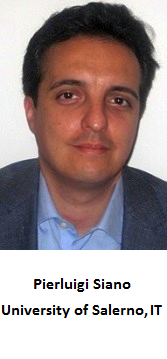 |
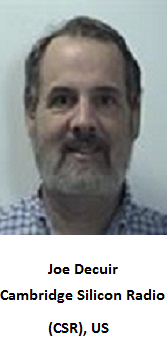 |
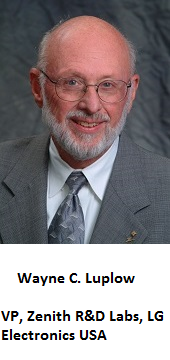 |
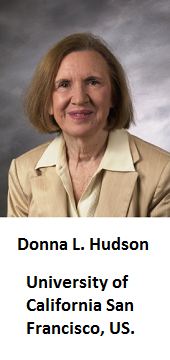 |
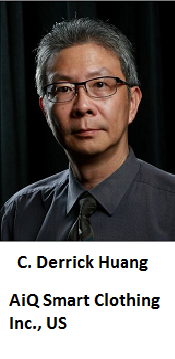 |
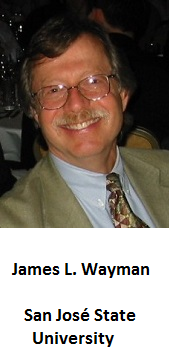 |
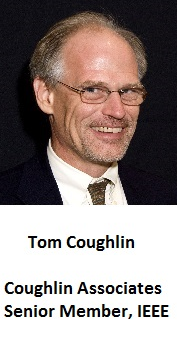 |
Thomas Wiegand
Fraunhofer Heinrich Hertz Institute, BerlinTU Berlin, DE
Recent Advances in Video Coding and Processing
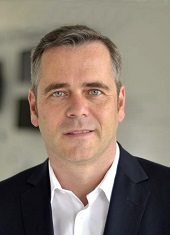
Abstract
Biography
Thomas Wiegand is a professor in the department of Electrical Engineering and Computer Science of the Technical University of Berlin, chairing the Image Communication Laboratory, and is jointly heading the Fraunhofer Heinrich Hertz Institute, Berlin, Germany. He received the Dipl.-Ing. degree in Electrical Engineering from the Technical University of Hamburg-Harburg, Germany, in 1995 and the Dr.-Ing. degree from the University of Erlangen-Nuremberg, Germany, in 2000. He joined the Heinrich Hertz Institute in 2000 as the head of the Image Communication group. From 2008-2013, he was jointly heading HHI’s Image Processing department. His research interests include video processing and coding, multimedia transmission, as well as computer vision and graphics.From 1993 to 1994, he was a Visiting Researcher at Kobe University, Japan. In 1995, he was a Visiting Scholar at the University of California at Santa Barbara, USA. From 1997 to 1998, he was a Visiting Researcher at Stanford University, USA and served as a consultant to 8x8, Inc., Santa Clara, CA, USA. From 2006-2008, he was a consultant to Stream Processors, Inc., Sunnyvale, CA, USA. From 2007-2009, he was a consultant to Skyfire, Inc., Mountain View, CA, USA. Since 2006, he has been a member of the technical advisory board of Vidyo, Inc., Hackensack, NJ, USA. From 2011-2012, he was a visiting professor at Stanford University, USA. Since 1995, he has been an active participant in standardization for multimedia with successful submissions to ITU-T VCEG, ISO/IEC MPEG, 3GPP, DVB, and IETF. In October 2000, he was appointed as the Associated Rapporteur of ITU-T VCEG. In December 2001, he was appointed as the Associated Rapporteur / Co-Chair of the JVT. In February 2002, he was appointed as the Editor of the H.264/MPEG-AVC video coding standard and its extensions (FRExt and SVC). From 2005-2009, he was Co-Chair of MPEG Video.
In 1998, he received the SPIE VCIP Best Student Paper Award. In 2004, he received the Fraunhofer Award and the ITG Award of the German Society for Information Technology. The projects that he co-chaired for the development of the H.264/MPEG-AVC standard have been recognized by the 2008 ATAS Primetime Emmy Engineering Award and a pair of NATAS Technology & Engineering Emmy Awards. In 2009, he received the Innovations Award of the Vodafone Foundation, the EURASIP Group Technical Achievement Award, and the Best Paper Award of IEEE Transactions on Circuits and Systems for Video Technology. In 2010, he received the Eduard Rhein Technology Award. In 2011, he received the Best Paper Award of EURASIP, the Karl Heinz Beckurts Award and was elected Fellow of the IEEE. He is a recipient of the 2012 IEEE Masaru Ibuka Technical Field Award. In 2013, he received the Best Paper Award of IEEE Transactions on Circuits and Systems for Video Technology, the Best Journal Paper Award of the IEEE Communications Society MMTC, the International Multimedia Telecommunications Consortium (IMTC) Leadership Award, and the Research Award for Technical Communication of Alcatel Lucent Foundation. He was a Guest Editor for the IEEE Transactions on Circuits and Systems for Video Technology for its Special Issue on the H.264/AVC Video Coding Standard in July 2003, its Special Issue on Scalable Video Coding-Standardization and Beyond in September 2007, and its Special Section on the Joint Call for Proposals on High Efficiency Video Coding (HEVC) Standardization and its Special Section on the HEVC standard. From 2006-2010, he has been an Associate Editor of IEEE Transactions on Circuits and Systems for Video Technology.
Pierluigi Siano
University of Salerno, ITDemand Side Management and Energy Management Systems from a CE perspective.
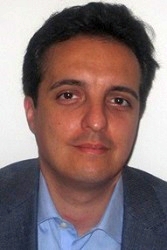
Abstract
Biography
Pierluigi Siano (M’09 SM'14) is Aggregate Professor with the Department of Industrial Engineering, University of Salerno. His research activities are centered on the integration of renewable distributed generation into electricity networks and Smart Grids and on the application of soft computing methodologies to analysis and planning of power systems. In these fields, he has coauthored more than 150 papers including more than 60 international journals. Dr. Siano is an Associate Editor of the IEEE TRANSACTIONS ON INDUSTRIAL INFORMATICS, member of the editorial board of more than twenty International Journals in the field of power systems and smart grids. He is Vice-Chair of the Technical Committee on Smart Grids and a member of the Technical Committee on Renewable Energy Systems of the IEEE IES. He served as a reviewer and session chairman for many international conferences. He has been a Special Sessions Co-Chair of the IEEE-ISIE 2010 and Guest Editor of the many Special Sections of the IEEE TRANSACTIONS ON INDUSTRIAL ELECTRONICS and IEEE TRANSACTIONS ON INDUSTRIAL INFORMATICS.Joe Decuir
Cambridge Silicon Radio, USThe Cloud meets Bluetooth Smart.
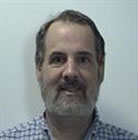
Abstract
Bluetooth Low Energy, aka Bluetooth Smart, can wirelessly connect sensors that run on coin cells or scavenged power for years. That makes Bluetooth Smart attractive for implementing the "Internet of Things". What is new: connecting these devices to the Internet. The Bluetooth Special Interest Group has just published a pair of RESTful APIs . These APIs, implemented in a gateway, can allow an Internet client application to find, connect and operate Bluetooth Smart servers: sensors and effectors.The presentation will cover: what is Bluetooth Smart? How does it work? How does the energy get so low? How the client-server architecture works. How to fit a RESTful API to that architecture. Use cases.
Biography
Joe has engineering degrees from UC Berkeley. Within IEEE his work has joe-csrspanned Medical Electronics, Consumer Electronics, Computers and Communications. His experience includes the Institutes of Medical Sciences, Atari, Amiga, Teledesign, Everex, Microsoft, MCCI and CSR. He worked as design engineer and system architect on various legacy Atari and Amiga computer systems. More recently Joe has been chair and editor for a range of wired and wireless CE standards including the USB communications class driver 1.0, 1.2; Wimedia Networking 1.1 and wireless USB 1.1; he has also contributed to the Bluetooth 3.0 and 4.0 (low energy) standards.Joe is still having an interesting career. Highlights: video game graphics, wired connectivity standards and wireless connectivity standards. His day job is to advance wireless connectivity, as a Standards Architect for CSR, as the chairman of the Bluetooth Internet Working Group, and as a Distinguished Lecturer for the IEEE Consumer Electronics Society. For a hobby, he is also vice chair of the IEEE Global Humanitarian Technology Conference for 2014, and chair for 2015.
Wayne Luplow
Zenith R&D Labs, LG Electronics USA, USTHE LEGEND OF TV
Long and Winding Road: A Memoir
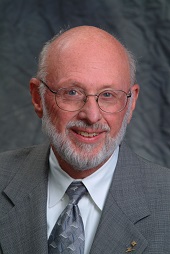
Abstract
In a personal memoir, IEEE Life-Fellow Wayne Luplow will look at the future of television through the lens of his career-spanning five decades. From his early days at Sarnoff working on analog IF amplifiers to his early work at Zenith in black-and-white and color TV to his pioneering developments in HDTV and mobile TV, this engineering leader brings unique perspectives to today’s Smart TV revolution, next generation digital transmission and our Ultra high-definition future. More than a dry oral history, Luplow’s ICCE 2014 keynote promises to be a poignant look at the past, present and future of the most dynamic industry on the planet.
Biography
Wayne Luplow holds a BSEE from the University of Wisconsin, and an MSEE from the University of Pennsylvania. Wayne has had 51 years experience in the television industry. He led the team that developed the ATSC Digital TV transmission system. His current Zenith responsibilities include the establishment and deployment of the terrestrially broadcasted Mobile DTV (MDTV) system and the development of the next generation broadcast television system (generally known as ATSC 3.0). Prior to his 50 years at Zenith, he was employed by RCA/Sarnoff.He has been a member of the Advanced Television Systems Committee (ATSC) Board of Directors since 1988 and served as ATSC Board Chairman in 2010. He is also chair of the Video Systems Committee (R4.0) and past-chair of the Technology Standards Council (TSC) of the Consumer Electronics Association (CEA).
An IEEE Life-Fellow, Luplow served as editor of the IEEE's Transactions on Consumer Electronics for 35 years. He has contributed articles to numerous IEEE and other industry publications. Luplow is a 2006 recipient of the prestigious IEEE Masaru Ibuka Award, for “contributions to the development of the vestigial sideband (VSB) digital transmission system for digital television broadcasting.” Wayne is currently a member of the administrative committee (AdCom) of the IEEE Broadcast Technology Society and the board of governors (BoG) of the IEEE Consumer Electronics Society.
Donna L. Hudson
University of California San Francisco, USTechnology in Healthcare

Abstract
Since the invention of the CT scanner in the 1970s technology has become an integral part of the field of medicine. We now take for granted the use of a broad range of powerful scanners using a number of different technologies. Although these devices are quite well-known to the general public there are many technologies in the interface of engineering and medicine that have been seamlessly integrated and are not obvious to consumers. IEEE Technical Activities has recently established the Life Sciences Technical Community to bring together Societies who have an interest in this intersection. Consumer Electronics is one of the founding members and is also a co-sponsor of Reviews in Biomedical Engineering, along with the Engineering in Medicine and Biology Society that provides comprehensive reviews of engineering methodologies and applications. This presentation will provide an overview of the wide-spread use of technologies in medicine and healthcare, including the rapidly progressing incorporation of technologies into hospital care.
Biography
Donna Hudson (M’81-SM’94-F’01) received her PhD from UCLA School of Engineering and Applied Science (1981) and has been on the Faculty at University of California since then. She is Director of Academic Research and Technology at University of California, San Francisco (UCSF), Professor of Clinical and Translational Informatics at UCSF and Professor in the Joint Graduate Group in Bioengineering, UC Berkeley/UCSF. Early in her career she was employed by Boeing. She is a past-president of the International Society for Computers and Their Applications and former Vice-President of the World Academy of Biotechnology. Dr. Hudson has over 250 refereed publications in computer-assisted medical decision-making, biomedical signal analysis, neural network modeling, telemedicine for home healthcare, and complex analysis of biomedical data applied to cardiology, neurology, and cancer diagnosis and prognosis and has authored two books. She is an IEEE Fellow and Fellow of the American Institute for Medical and Biological Engineering (AIMBE).C. Derrick Huang, PhD
AiQ SmartClothingCollege of Business of Florida Atlantic University (FAU), US
Internet of Things and the Human Touch
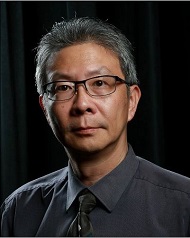
Abstract
In just a few short years, areas such as social networking, cloud computing, mobile apps, data analytics have seen tremendous growth and are converging to create a perfect backdrop for Internet of Things. Despite the popular press had led us to believe, the most exciting part of IoT is not microwave ovens and toasters with Internet connections; it is connected humans. Although the backend support is all there, the bottleneck seems to be the data collection interface to get anything done, we are still forced to manually input data into the devices such as tablets or mobile phones. There have been attempts to solve this personal interface problem with accessories wrist band, earphones, eyepieceand “internal interfaces”implants, swallowable chips, but all that requires lifestyle changes or even invasive procedures. The best longterm solution is a true wearable interface, one that built into our existing lifestyle without any intrusive effect. This presentation will provide an overview of such a true wearable approach, including its requirements, technologies, limitations, and potentials.
Biography
A strategy consultant to AiQ Smart Clothing, Inc. and renowned professor of information technology at the College of Business of Florida Atlantic University (FAU), Dr. Huang is actively engaged in teaching, research, and consulting in the areas of technology strategies, business analytics, and information management. Prior to joining FAU, he held executive-level positions in business development and strategic marketing at Siemens, Nortel, and other high-tech companies. For more than two decades, Dr. Huang has helped corporations and entrepreneurs navigate and develop innovative information technologies, (re)focused business strategies, and new market targets. Among his many professional and commercial accomplishments are Siemens Telecom Networks’ development of the disruptive IP switching product and Nortel’s successful entry into the cable and competitive local exchange carrier industries. Currently, he is working with the executives at AiQ Smart Clothing to chart a path for the company to advance its leadership in the wearable technology industry. Dr. Huang holds Ph.D. in Computer Science and M.S. in Applied Physics from Harvard University.James L. Wayman, Ph.D.
FIEEESan José State University
Biometrics, Privacy, and Remote Authentication
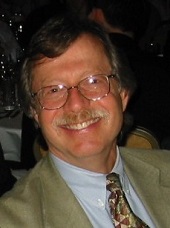
Abstract
The intersection of consumer electronics and privacy has never been more publicly controversial than it is today in the wake of revelations about surreptitious data collection by both commercial and government entities. When we add the potential for use of biometrics for remote authentication via common communications devices like cell-phones, the concern for individual privacy becomes even more pronounced. It is quite appropriate that the mention of “biometrics” in conjunction with “remote authentication” should prompt a pause for reflection. In this talk, we will present a clarification of terms based on authoritative sources, review the privacy concerns historically engendered by biometrics, discuss a framework for analysis of the impact of authentication technologies on privacy, and offer some ideas for actions we all can take to protect ourselves when using biometric technologies in applications requiring remote authentication.
Biography
Dr. Jim Wayman is currently an IEEE “Distinguished Lecturer” in the area of automated human recognition (Biometrics) and works as a research administrator in the Office of Graduate Studies and Research at San Jose State University. He is received the Ph.D. degree in engineering in 1980 from the University of California, Santa Barbara, and has worked continuously in the field of biometrics since 1984. He was a member of the U.S. National Academies of Science/National Research Council (NRC) "Whither Biometrics?" and "Authentication Technologies and their Implications for Privacy" committees and served for 4 years on the NRC Panel on Information Technology. He is a Fellow of the IEEE and the IET and has served as a paid advisor on biometrics to 11 national governments.Tom Coughlin
Coughlin AssociatesSenior Member, IEEE
A Moore’s Law For Mobile Power
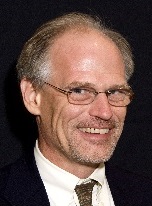
Abstract
The IEEE Consumer Electronics Society Future Directions Committee has launched an effort with other IEEE societies to create an initiative for Safe Advanced Mobile Power. This talk will discuss the initiative and how it will lead to more sustainable power sources and mobile consumer electronic products, while meeting important requirements for safety, sustainability, manufacturability and cost. The objective of this initiative is to promote the development of a technology to supply energy needs for a week’ worth of "normal" mobile device use without recharging from a fixed power source.